Current topics
Urban Rainfall
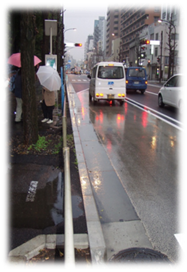 |
Related papers and projects Watanabe H. et. al.: Application of whole sediment toxicity identification evaluation procedures to road dust using a benthic ostracod Heterocypris incongruens. Ecotoxicol Environ Safety, 89, 245-251, 2013. [DOI] Kyoshiro Hiki and Fumiyuki Nakajima: Effect of salinity on the toxicity of road dust in an estuarine amphipod Grandidierella japonica, Water Science and Technology, Vol.72, No.6, pp.1022-1028, 2015. [DOI] Ecotoxicological evaluation of particle-bound pollutants discharged to urban water environment (Nakajima, Project Leader) (FY2005) Research direction and methodology Rainwater transports various materials into water environment, for example urban surface deposit. Road dust is known to contain a broad range of toxic compounds, whose environmental effect and behavior remains unclear. We have to find a best management method to avoid urban inundation, to utilize rainwater as water resource and to reduce the harmful effect by the runoff pollutants. Nakajima has been a management committee member of JCUD of IWA/IAHR* since 2011 and expect young researchers to join this field of study. |
Aquatic lives, especially benthos
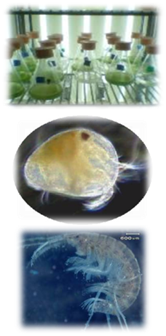 |
Related papers and projects Sevilla J.B. et. al.: Comparison of aquatic and dietary exposure of heavy metals Cd, Cu and Zn to benthic ostracod Heterocypris incongruens. Environ Toxicol Chem, 33(7), 1624-1630, 2014. [DOI] Chaminda G.G.T. et. al.: Metal (Zn, Cu, Cd and Ni) complexation by dissolved organic matter (DOM) in wastewater treatment plant effluent. J Water Environ Technol, 11(3), 153-161, 2013. [DOI] Effect of DOM in heavy metal transfer from food organisms to benthic crustaceans in estuarine environment (Nakajima, Project Leader) (FY2012-2014) Research direction and methodology Japanese Ministry of Environment (MOE) set two new environmental water quality standards for aquatic life conservation and wholly revised the list of monitoring items. Whole effluent toxicity (WET) testing has been investigated by MOE to be introduced in Japanese regulatory system. To establish a scientifically-sound system, researcher’s effort is expected to accumulate our knowledge on environmental behavior of pollutants (e.g. heavy metals), relationship between sediment contamination and benthic organisms, effect through different pathways (aquatic and dietary), etc. You will conduct your research with sediment toxicity testing, chemical analysis by advanced analytical tools and mathematical modeling to predict the real situation. |
Ideal situation of our water environment ?
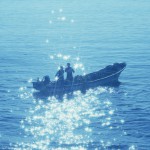 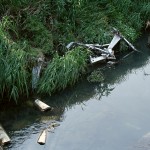 |
Related papers and projects Tomohiro Kuwae, Jota Kanda, Atsushi Kubo, Fumiyuki Nakajima, Hiroshi Ogawa, Akio Sohma and Masahiro Suzumura: Blue carbon in human-dominated estuarine and shallow coastal systems, Ambio, Vol.45, No.3, pp.290-301, 2016. [DOI](open access) ’Urban Blue Carbon’: building a novel model of coastal carbon cycling (Nakajima, Project member) (FY2012-2014) Research direction and methodology Direction of environmental management established in the high economic growth period should be reconsidered in line with the times when the global environmental issues become more prioritized and the population decreases. How should we define the use of water environment? For example, should we include carbon fixation and sequestration at coastal zones as intended function of water environment management? To explore an ideal situation of our water environment, which natural phenomena should be clarified which problems in our society should be solved? Research will be conducted with the field survey, laboratory experiments and/or mathematical simulation under various scenarios. |
Wastewater treatment by membrane technologies
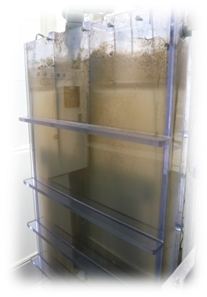 |
There is a strong need for revisiting the existing water system and renovating to a wise system which secures sustainable water resources in urban area and coexists with the environment. Membrane technologies, especially MBR, have gained a great deal of attention as a water reuse technology that can ensure safety and security by reducing water reuse-associated risks. Submerged MBR, developed in our laboratory 25 years ago, has found numerous applications in the field of advanced waterwater treatment and water reuse. However, it still remains immature in terms of sustainability, requiring high energy demand and being inable of dispelling all the concerns of trace pollutants diffusion, with its potential not fully exploited. This laboratory has developed various elemental technologies that can contribute to shifting the current energy consuming wastewater treatment system to energy and resources productive one. Among those, inline-thickner MBR (itMBR) is a core process and we have been advancing its development towards compact and energy-saving treatment. |
Treatment viewed from microbes
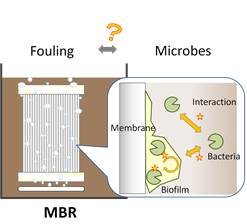 |
In MBR for example, it is microbes that play the crucial roles in removing organic pollutants. Dissolved organics are converted to solids (cell biomass) and gasses (CO2) by microbiological activities, solids then eliminated from effluent by membrane filtration. Nutrients such as nitrogen and phosphorus can also be removed by setting appropriate conditions. These treatment processes were developed based mainly on empirical try-and-error, regarding microbes in activated sludge as black-box. However, towards further advancement in treatment technologies, do we still need to wait accumulation of empirical knowledge? If we can get in-depth understanding of the players (microbes), e.g. knowing who, when, where and how in a specific reaction, we may be able to find innovative ideas for process design and operating conditions. |
Analyzing microbes
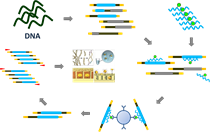 |
It is not an easy task to know which microbe is doing what. More than 10^8 cells exist in 1 ml of activated sludge, harboring thousands of species. Inable to see single cells by naked eyes, and hard to tell which bacteria by its shape under normal microscopic observation. It is widely accepted that most of microbes in environments are unculturable in artificial conditions once isolated from original environment. Although these difficulties remain same, recent advancement of molecular techniques has shed light on the unseen microbes and their functions, and provided a great power of analyzing environmental microbial communities. However, there still remain technical limitations and, in engineering point of view, it is of great importance to make techniques more “reasonable”. |
Past topics
Development of next generation MBR
Submerged membrane bioreactor called the second generation MBR was developed at our laboratory twenty years ago. The submerged MBR has been applied all over the world for advanced treatment and reuse of wastewater. However further evolution of the MBR technology is required for the achivement of above objective. As a pioneer in the development of MBR system, we are now developing the following new gereration MBR:
- Submerged nano filtration MBR (all-in-one super-advanced treatment process)
- MBR system for treatment of solid and liquid wastes involving methane fermentation of garbage, black water and sludge (for energy recovery with fuel cell system and on-site groundwater recharge)
- Renovation of existing wastewater treatment plants with an inclined plate MBR able to minimize sludge production
- Highly integrated submerged membrane module and fungal membrane reactor for dye wastewater treatment

